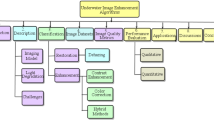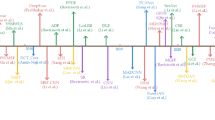Abstract
Astronomical imaging of a star cluster is one of the paramount ways to learn about stellar evolution, stellar dynamics. A large telescope is not generally accessible to all observers. In that context, small telescope observations with a proper denoising scheme can be an excellent alternative. This paper proposes a technique to denoise star cluster data using an undecimated wavelet transform, with a modified thresholding process. Our work aims to prove the effectiveness of such a wavelet-based technique on real-time data. We present drastically noise-infested observational data of the NGC 2301 star cluster, captured over five nights from Fr. Eugene Lafont Observatory, Kolkata. We observe that for highly noise-polluted data, the conventional methods of dark frame subtraction and flat frame division are inadequate to produce the desired quality of images due to functioning exclusively in the spatial domain. Thus, we take the wavelet-based multiresolution approach to ameliorate those raw images. We also introduce a modified thresholding function to modulate the image at different resolution levels. A standard star detecting software Daophot II quantifies the increment in the number of detected stars from raw images to the images processed by our proposed method as: for red filter 397–903, for green filter 663–945, for blue filter 362–896. On the contrary, Daophot II can’t detect any star in the highly noise-polluted images processed by the conventional methods. Therefore, we hope our proposed processing methodology will motivate others to initiate small telescope observations from any site restrained by its geographical location.


















Similar content being viewed by others
References
Atkinson D. E., Hall D. N., Jacobson S. M., Baker I. M. 2017, Astron. J. 154, 265
Carroll B. W., Ostlie D. A. 2006, An introduction to modern astrophysics and cosmology/BW Carroll and DA Ostlie. 2nd edition, San Francisco: Pearson
Cohen A., Daubechies I., Feauveau J.-C. 1992, Commun. Pure Appl. Math., 45, 485
Cohen L. 1995, Time-Frequency Analysis/Leon Cohen. Prentice Hall PTR Englewood Cliffs, New Jersey, p 299
Dasgupta S., Gosain A. K., Rao S., Roy S., Sarraf M. 2013, Clim. Change, 116, 747
Daubechies I. 1992, Ten lectures on wavelets (SIAM)
Donoho D. L. 1992, in Presented on the International Conference on Wavelets and Applications, Tolouse, France
Donoho D. L., Johnstone I. M. 1995, J. Am. Stat. Assoc., 90, 1200
Faraji H., MacLean W. J. 2006, IEEE Trans. Image Process., 15, 2676
Gonzalez R., Woods R. 2008, Digital Image Processing 3rd Edition, 461
Grubissich C., Purgathofer A. 1962, Zeitschrift fur Astrophysik, 54, 41
Holschneider M., Kronland-Martinet R., Morlet J., Tchamitchian P. 1990, in Wavelets. Springer, 286
Karttunen H., Kröger P., Oja H., Poutanen M., Donner K. J. 2016, Fundamental Astronomy. Springer, Berlin
Koppelman M. 2005, Soc. Astron. Sci. Ann. Symp., 24, 107
Mallat S. 2008, A Wavelet Tour of Signal Processing, Third Edition: The Sparse Way. Academic Press, Inc., New York
Mallat S. G. 1989, IEEE Trans. Pattern Anal. Mach. Intell., 11, 674
Miles R. 1998, J. Br. Astron. Assoc., 108, 65
Pan C., Weng F., Beck T., et al. 2016, in 2016 IEEE International Geoscience and Remote Sensing Symposium (IGARSS), IEEE, 1966
Park W., Pak S., Shim H., et al. 2016, Adv. Space Res., 57, 509
Polikar R., et al. 1996, The wavelet tutorial, http://users.rowan.edu/~Polikar/WTtutorial.html
Resnikoff H. L., Raymond Jr O., et al. 2012, Wavelet Analysis: The Scalable Structure of Information. Springer, Berlin
Saha S. K. 2002, Rev. Modern Phys., 74, 551
Shensa M. J. 1992, IEEE Trans. Signal Process., 40, 2464
Starck J.-L., Murtagh F. 1994, Astron. Astrophys., 288, 342
Starck J. L., Murtagh F., Bijaoui A. 1995, in Astronomical Society of the Pacific Conference Series, Vol 77, Astronomical Data Analysis Software and Systems IV, eds Shaw R. A., Payne H. E., Hayes J. J. E., p 279
Starck J.-L., Murtagh F., Fadili J. M. 2010, Sparse Image and Signal Processing: Wavelets, Curvelets, Morphological Diversity. Cambridge University Press, Cambridge
Stetson P. B. 1987, Publ. Astron. Soc. Pac., 99, 191
Strang G. 1989, SIAM Rev., 31, 614
Strang G. 1993, Bull. Am. Math. Soc., 28, 288
Tangirala A. K. 2018, Principles of System Identification: Theory and Practice. CRC Press, Boca Raton
Torrence C., Compo G. P. 1998, Bull. Am. Meteorol. Soc., 79, 61
Vesperini E. 2010, Philos. Trans. R. Soc. A Math. Phys. Eng. Sci., 368, 829
Vetterli M., Kovacevic J. 1995, Wavelets and Subband Coding. Prentice Hall, Hoboken
Acknowledgements
The authors would like to thank Anjasha Gangopadhyay, faculty at Hiroshima Astrophysical Science Center, Hiroshima University, Japan, for valuable discussions and technical assistance for detecting stars using Daophot II. Special thanks to Subhash Bose, faculty at Department of Astronomy, The Ohio State University for insightful discussions on Johnson–Cousins BV R Filter System and isochrone fitting.
Author information
Authors and Affiliations
Corresponding author
Appendix A. Histogram plots showing gain in star count
Appendix A. Histogram plots showing gain in star count
See Figure 19.
Rights and permissions
About this article
Cite this article
Chakraborty, S., Mondal, T., Debnath, A. et al. A multiresolution approach to enhance small telescope data under non-ideal conditions. J Astrophys Astron 43, 22 (2022). https://doi.org/10.1007/s12036-022-09807-w
Received:
Accepted:
Published:
DOI: https://doi.org/10.1007/s12036-022-09807-w





